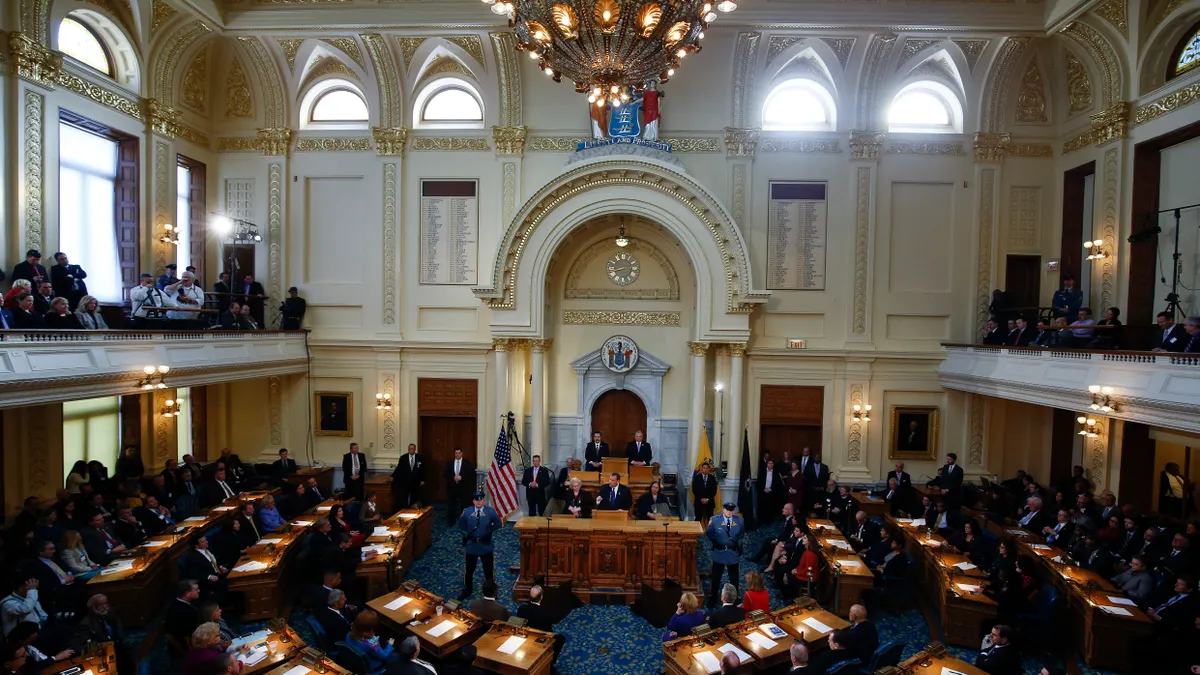Defense and intelligence contractor ManTech is shifting towards a fixed-price model and away from the cost-plus pricing that agencies traditionally use to mirror changes in the way the federal government wants to do business, the company's CFO said.
Judy Bjornaas, executive vice president and CFO of ManTech, said the Defense Department (DOD) and other federal agencies in the national security and intelligence space have been trying to speed their procurement processes to better match the pace of change in the tech industry, and her company's changes mirror that.
"Three or four years ago, there was huge budget pressure on the government, so they were really looking for contractors who can keep the lights on for the cheapest price," Bjornaas said in a CFO Thought Leader podcast released last week. "Now they've come back around and said, 'That really didn't work. Now we want who can give us the best solution to move us forward, and it doesn't need to be at the cheapest price.'"
The federal government's shift to solutions-based contracting means less micromanaging of staffing and other decisions, which enables contractors like ManTech to price services in a way that's more common commercially. "They're no longer telling you how many of what type of people they want; they're telling you what they need to get done and letting you make those decisions," she said. "And that moves more toward a fixed-price contract versus a lot of the cost-plus contracts that DOD has specifically, historically put out.
"We still have a number of customers who are used to a more staff-augmentation [approach]," she added. "'I want 50 people, and then we'll figure out together how we'll get it done.' But part of this move toward being able to procure faster, there is a shift toward more solutions-based contracting."
Consolidation increased company flexibility
ManTech is a 50-year-old company with $2 billion in annual revenue. Bjornaas said one of the first things she did as CFO almost a decade ago was consolidate accounting, finance and transactional functions, relieving executives of managing operational details such as invoicing and receivables, enabling them to instead focus on maintaining relations with partner agencies.
"The company was very decentralized," she said. "We had a number of operating groups that really ran themselves as separate businesses. The company had grown up through a number of acquisitions ... I realized there was a lot of inefficiencies with that model. So, I got together with the finance leads of each of those organizations, and we came up with best practices and more standardized ways of doing things."
The team she put together also sought to centralize some of the transactional work at the enterprise level. "So, we set up a number of shared services that took a lot of the day-to-day stuff off the plates of the groups so they could concentrate more on helping grow their business units instead of worrying about which vendors got paid."
Under the change, program managers and business development staff are better positioned to nurture "customer intimacy" with the agencies they work with and advise them on new technologies or better ways to operate, she said.
Maintaining the company's flexibility has been key to staying competitive in winning contracts even as the government shifts its priorities. Bjornaas said it's hard for commercial businesses to make the shift to government contracting because working with public agencies isn't like working with other clients; it involves changing contracting priorities, intensive regulatory scrutiny and detailed reporting requirements.
"I've seen a number of companies try to break into government, and I've seen a number of government companies try to get into commercial, and it really is just very different in how you operate and how you work with your customer," she said. "I don't think, on the commercial side, when you submit a bid or something, you're giving them the full cost buildup of how many people you're bidding and at what cost, what your indirect rates are and what fee you're going to make. And you do that, for the most part, with the government."
Companies get frustrated by how long it takes the government to make awards — typically anywhere from nine to 24 months — especially given the rapid pace of technology change, Bjornaas said. But change is starting to happen. "They are trying to figure out how they can get faster technology insertion," she said.
Far-in-the-future view
The nature of the contracts gives Bjornaas a long-term view of her company's future income.
"Our backlog and bookings are things I really focus on from a longer-term revenue growth metric," she said. "Most of our contracts are between five and 10 years in length, so as your backlog grows, it gives you a lot of long-term visibility into what your revenue's going to be in the future."
She said she also looks at metrics related to staffing.
"The labor market is very tight, so I spend a lot of time looking at how our labor is growing, how many open requisitions we have, how fast we’re getting people in," she said. "Another advantage with government contracting is, typically, the new contracts are a consolidation or a we-compete-with-someone-else's-work, so usually there is some level of existing staff you get to bring in and you supplement that for growth. But labor is a key metric I monitor and then, obviously, margins are very top of mind."




















